He can coronavirus to be preached in pandemic since last Wednesday afternoon, however its effects are limited in relation to other diseases that have plagued humanity from time to time. From antiquity until the 20th century there were diseases that literally destroyed entire regions, led to the collapse of empires, changes in the socio-economic environment and millions dead. Just think, for example, that inguinal plague during the Middle Ages killed one in three Europeans, while the Spanish flu that broke out a few months before the end of World War I had multiple casualties from the war itself.
Let's look at the most important pandemics over time…
430 BC: The plague that led to the collapse of ancient Athens

In the second year of the Peloponnesian War (430 BC) the Athenians, in addition to the siege of the Spartans outside the city, had to face a relentless enemy within the walls, much more insidious, the plague. It was an epidemic that people did not know how to deal with. As the ancient Greek historian Thucydides describes, the patients experienced a sudden headache and a high fever along with body irritations and stinging in the eyes. Inside the body the pharynx and tongue became bloody, while the exhalation was unnatural and smelly. But these were only the initial phenomena. This was followed by sneezing, hoarseness in the voice and a loud cough. Reaching the stomach, it caused nausea and vomiting of bile, while people who had a tendency to vomit but did not, had strong convulsions, where in some it stopped after a while and in others it continued for a long time.
Most people died on the seventh or ninth day after the onset of the disease. Those who could survive longer experienced severe stomach pain and diarrhea to such an extent that they lost their lives from exhaustion. According to Thucydides, in order to prevent death, one cut with the first symptoms of the part of the body where there was an obvious sign of symptoms, such as the extremities of the hands and feet, while some even took out their eyes.
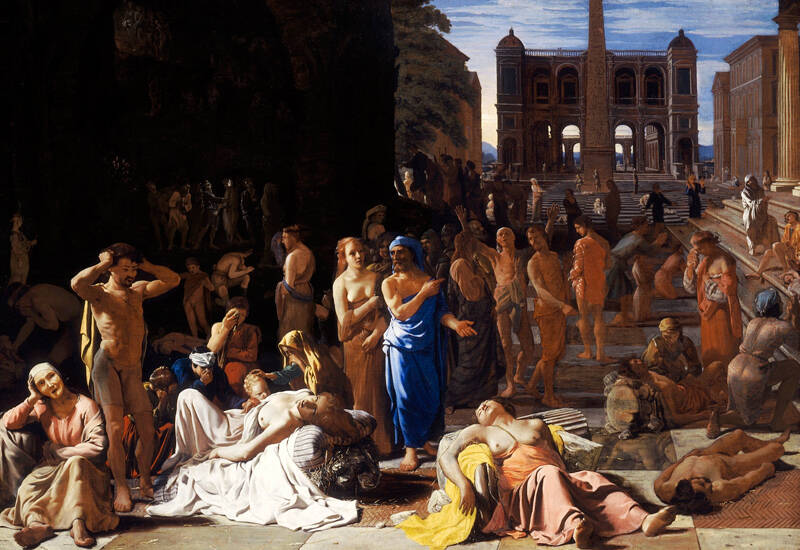
It is speculated that the plague originated in Ethiopia and passed through Egypt and Libya to the Greek world; initially in the port of Piraeus which was the main gateway to trade, while it was also located the following year, in 429 BC. but also in the winter of 427 to 426 BC. It is said to have contributed catalytically to the evolution of the war lost by the city-state of Athens, which led the Delian Alliance. It is estimated that it killed 16% to 33% of the city's population, which then amounted to 300.000. So, the deaths were from 48.000 to 96.000, a huge number for the data of the time. At least 1.400 hoplites and 300 cavalry were lost, as well as powerful men of the Athenian Republic, such as Pericles.
The Spartans at the sight of the crowd of funeral fires in the city withdrew in order to avoid the epidemic. The enemy was disappearing without even continuing to fight. What exactly this plague was has not been clarified to this day. Researchers believe the area was hit by typhoon or inguinal plague or chickenpox or Ebola-type hemorrhagic fever. In any case, Athens could never be at the level of power it had before the plague.
541 - 542 AD: The "plague of Justinian" that struck the Byzantine emperor himself

It was the most deadly disease that struck the thousand-year-old Byzantine Empire. At its peak it killed over 5.000 people a day in Istanbul! The reason for the terrible "plague of Justinian", as it was named, as he appeared at the time on the throne sat Justinian I the Great (ie from August 1, 527 to November 14, 565) and especially in the period 541 to 542 AD. . The pandemic caused the deaths of about 25 million people during the first case and another 50 million during the second case, two centuries later (in 750 AD).
Modern scholars report that the disease may have wiped out 40% of the Queen's population, which then numbered about 400.000 and possibly 25% of those living in the Eastern Mediterranean at the time.

Impact of plague was the financial collapse of the Eastern Roman Empire, as people out of fear sat at home and did not go to work - had not been discovered you see telework. As a result, however, the emperor's plans to retake the western territories of Byzantium, which had been lost a century earlier, were also damaged. It is characteristic that Justinian himself fell victim to the epidemic, but thanks to the immediate intervention of the doctors and his strong wine, he managed to survive.
Inguinal plague is caused by the bacterium Yersinia pestis (Gersin bacillus) and is transmitted to humans by the bite of parasitic bugs. sick black rat. The disease occurs in three different forms: inguinal (with hemorrhagic lymphadenitis), pulmonary (with severe pneumonia) and septic. The latter two are almost always fatal if there is no immediate treatment.

According to the Byzantine scholar Procopius Caesar, who lived in those years (he was born in 500 and died in 565 AD) the zero point of the disease was the port of Pelusium in Egypt and was transported by ships to the imperial capital and then throughout the Mediterranean basin, Europe and faraway China.
1348 - 1353 AD: The terrible plague of the Middle Ages that caused the word "quarantine"
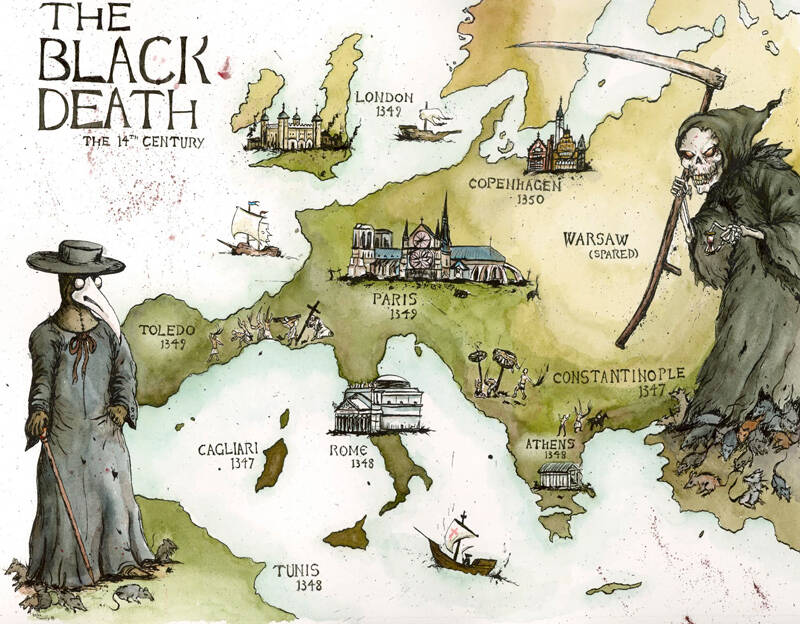
It is considered the greatest humanitarian catastrophe in history with the mortality rate reaching unprecedented levels surpassing all previous ones. It broke out in the middle of the 14th century and took the abominable name "Black Death". The reason for the plague that ravaged entire parts of medieval Europe to such an extent that the living were not enough to bury the dead. Suffice it to say that about one in three inhabitants of the old continent lost their lives with the population declining from 85 million to about 30.
The first recordings of phenomena plague took place in October 1347, when Genoese merchant ships that had started from the port of Kafa in the Crimea, approached Messina in Sicily. Some of these ships carried the dead who had died in the plague. It quickly spread to France and the coming months to the rest of Central Europe, England, Scandinavia and Russia.
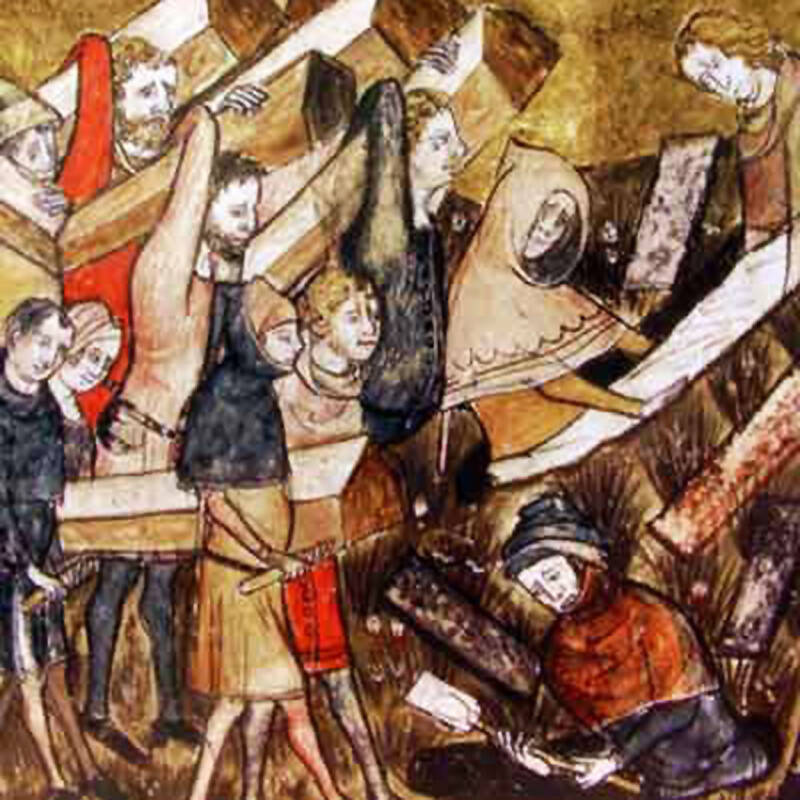
The source of the infection was the rats, but at that time they did not know it. In particular, it was due to a bacterium that was transmitted to humans by the bite of fleas that parasitized rodents. Recall that in the Middle Ages the population of mice increased to a dangerous degree, when the Pope called cats the organs of Satan, resulting in thousands being killed. The speed of transmission of the plague was favored by the substandard hygiene conditions, since people not only did not wash their hands, but bathed sparsely and where.

The symptoms started with a headache and chills. Fever, diarrhea and exhaustion followed in combination with photophobia and pain in the arms and legs. Within one to two days, swelling appeared in the form of lumps in the neck, under the arms and inside the thighs. In a short time this bump, which was enough to have the shape of an orange. it turned black, opened and pus and blood began to drip. At the same time, there was internal bleeding and the patient smelled awful, dying in horrible pain within a week, while there were deaths in just 24 hours. The most common form of plague was inguinal.
People believed that it was a godsend curse and tried to deal with the pandemic with liturgies and prayers.
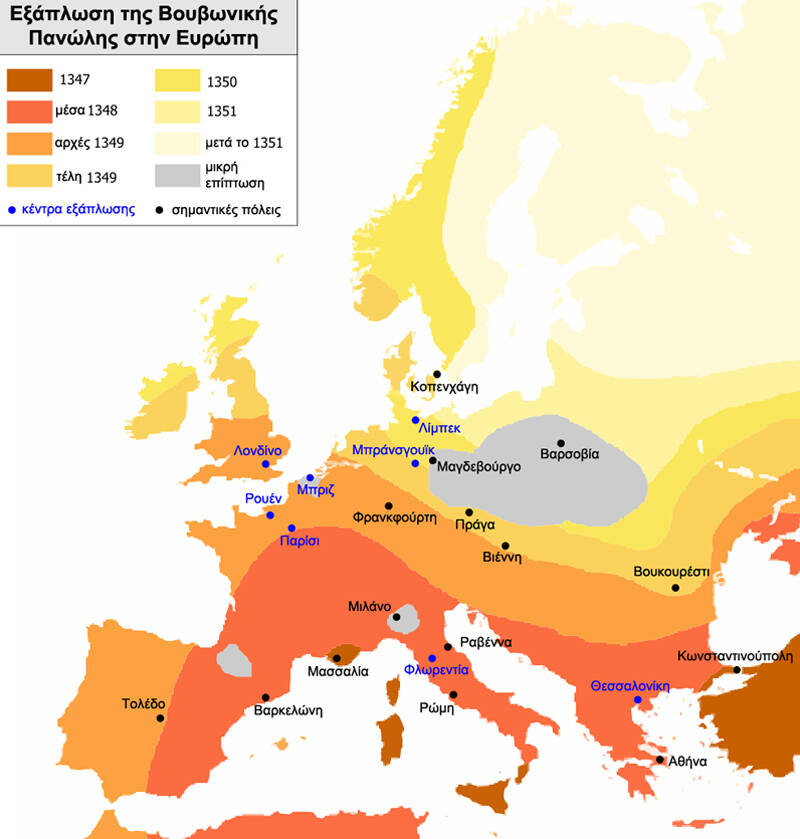
In order to reduce the transmission of the black plague, it was decided at some point that all ships moored in ports would be isolated for 40 days, which gave rise to the word "quarantine». From the French phrase une quarantaine de jours, meaning "40 days".
1918 - 1919: The flu that killed more people than World War I
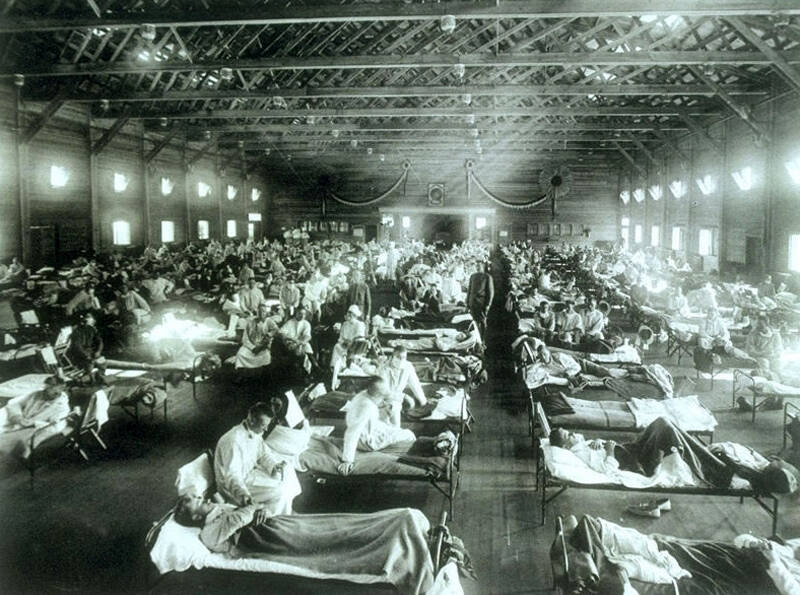
We all know that World War I (1914-1918) left millions dead - about 8,5 million soldiers and 14,5 million civilians. But how many know that eight months before its end, a pandemic broke out that resulted in many more deaths? The infamous "Spanish flu", which first broke out in France in April 1918 between British regiments stationed in Rouen and Vimere, claimed the lives of an estimated 21.640.000 people, but many put the number at 40 or even 50. millions. As the soldiers who carried the virus moved, so did her virus flu which seems to have jumped from birds to humans. It probably came from the Far East, but was named "Spanish" because the first reports of the pandemic were in the newspapers of Spain, a country that did not take part in the war.

Death resulted from acute inflammatory pulmonary edema, haemorrhagic pneumonitis, or acute haemorrhagic pneumonia. Cyanosis of the skin (it took on a blue color) was observed, especially around the face, mouth, neck and fingers. At necropsy the bases of the lungs were found to be more affected and the thoracic cavities contained light brown or yellow to dark red fluid. Another feature is that the Spanish flu preferred young people, losing their lives even within a day of being infected. The illness lasted a total of 18 months, a period that is not considered very long, but proved to be terribly fatal.
* George Sarris is a journalist - member of ESIEA, honored by the President of the Republic with the Ath. Botsis Award for the objective and complete presentation of historical political issues.
